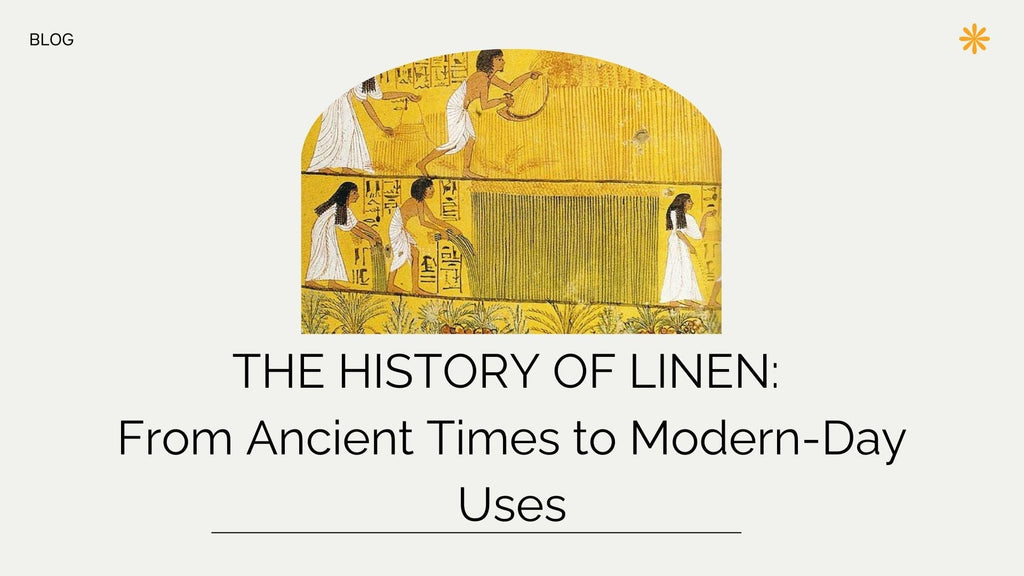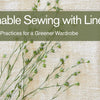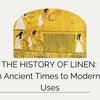The History of Linen: From Ancient Times to Modern-Day Uses

Linen, a fabric revered for centuries, has come a long way to leave an indelible mark on the history of human beings. Its tenacity, adaptability, and ageless elegance have captivated people since its first use in ancient civilisations and continue to do so now.
As you craft your path in your journey to become a seamstress, it’s vital to know how this treasured fabric found its way to what it is today. Let’s explore the milestones that linen has covered to become the world’s most treasured fabric.
The Ancient Origin

Flax, the plant from which linen is made, dates back to 7000 BCE. More accurately, the stalks of the plant are rich in cellulose fibre, the key ingredient that makes linen fabric. The flax plant has an annual growth cycle and can withstand dry climates with little maintenance. These and other properties made it a perfect choice for Egyptian farmers at the time.
The most widely accepted theory about linen’s origin is one that traces it back to ancient Mesopotamia and Egypt, where early human civilisation first erupted. This dates back to about 6,000 to 10,000 years ago. Linen was valued in these ancient civilisations for its outstanding properties, such as lightweight, breathability, and incredible strength.
The ancient linen was coarse compared to what we have today and was used to make currency, decorations, furnishings, and clothing. Egyptian pharaohs, including Tutankhamun, were frequently buried in linen clothing, emphasising their importance in ancient rites and ceremonial practices.
Medieval Europe

Other than Egypt, linen has also been traced in parts of Europe. The earliest known artifacts in Europe date back to about 3000 BCE and were found in Swiss lake dwellings. Also, some traces of linen were found in Qumran Cave in the Dead Sea region.
Monasteries played an important role in flax cultivation and processing across Medieval Europe. This increased the appeal of linen, making it one of the most sought-after textiles. It became synonymous with luxury, with the clergy and nobility dressed in exquisitely crafted linen clothing.
Industrial Revolution
The start of the Industrial Revolution represented a watershed moment in the history of linen. In 1810, the first flax-spinning machine was introduced. The manufacture of linen became more centralised in the European economy during the 18th and 19th centuries. Machines replaced manual work, leading to the large-scale production of linen fabric.
Innovations in spinning and weaving technology transformed the manufacturing process, making linen more affordable to the masses. Factories sprouted all across Europe, simplifying the manufacturing process and lowering prices. Linen became a standard fabric in everyday life, used for clothes, bedding, and home furnishings.
Still, it was held in high esteem by the masses.
Modern-Day Linen Applications

Linen has come a long way to be one of the most revered fabrics for its natural elegance and comforting properties. It’s highly breathable, and its moisture-wicking features make it an ideal choice of fabric for hot-weather clothing.
Due to its resilience, linen makes an excellent fabric for interior design, where it adds a modest appeal to a home through upholstery, bedding, and curtains. Unlike other textiles, linen has low elasticity, making it prone to wrinkling. However, most linen enthusiasts consider this as a natural charm since it becomes softer with every wear and wash.
Despite its endless strengths, it’s without downsides; linen quality degrades, although slowly, with exposure to bleach and sweat. But since it lacks keratin, linen cannot be affected by beetle or moth infestations.
Summary
Linen has a long-standing history, from the ancient Egyptian era, where it was reserved for royalty, to the present day, where it still holds significant value. When choosing your linen, consider the different fabric types based on weight and weaving pattern. Some of the types commonly available include plain-woven linen, damask linen, sheeting linen, and loosely woven linen.





